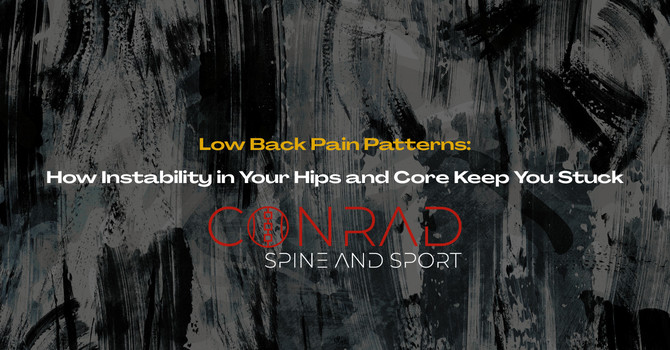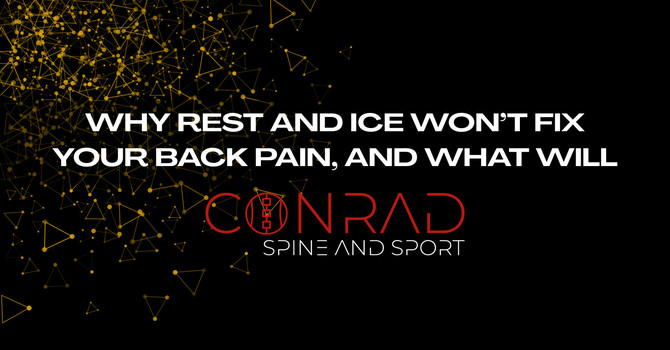
The Chronic Pain Blueprint: What It Really Takes to Heal
Chronic pain isn’t just frustrating—it can be life-altering. It affects how you move, how you feel, and even how you think about your future. Maybe you've tried everything—chiropractic care, physical therapy, medication, or even surgery—only to find that the pain keeps coming back. If this sounds familiar, it’s time to take a different approach.
Healing from chronic pain isn't just about symptom relief; it's about addressing the root cause and creating a sustainable, long-term solution. That’s exactly what The Chronic Pain Blueprint is designed to do. Let’s break down what it really takes to heal.
Step 1: Understand That Pain is a Complex System
Pain isn't just about muscles and joints—it’s a combination of physical, neurological, and psychological factors. Many people focus only on the site of pain, missing the bigger picture. Pain is your body's alarm system, and when it stays turned on too long, it can become hypersensitive. This is why temporary fixes often fail.
The Science of Chronic Pain
Research shows that when pain persists for more than three months, it can lead to central sensitization—a process where the nervous system becomes overly sensitive and amplifies pain signals. This is why chronic pain sufferers often feel discomfort even when there’s no active injury.
The Chronic Pain Blueprint starts by analyzing your entire movement system, identifying patterns of dysfunction, and retraining your brain and body to function optimally again.
Step 2: Identify and Correct Dysfunctional Movement Patterns
Most chronic pain cases involve compensatory movement patterns. If your back, shoulders, or knees hurt, it’s likely that another part of your body isn't doing its job correctly. Over time, these imbalances lead to excessive stress on certain areas, creating chronic pain.
We assess and correct these imbalances with:
-
Neuromuscular Re-education: Teaching your body proper movement mechanics.
-
Targeted Mobility & Strength Work: Restoring function and stability.
-
Hands-on Therapy & Chiropractic Care: Releasing tension while reinforcing new patterns.
Real-World Example: Overcoming Low Back Pain
One of our patients, a 45-year-old golfer, had been dealing with persistent low back pain for years. Traditional chiropractic adjustments helped temporarily, but the pain always returned. After following The Chronic Pain Blueprint, we identified hip mobility restrictions and core instability as the root cause. Through targeted movement training and progressive loading, he became pain-free within three months and regained full mobility in his swing.
Step 3: Train for Resilience, Not Just Recovery
Pain relief alone isn’t the goal—building resilience is. That means training your body to handle stress without pain flaring up. Many patients find relief temporarily, only to relapse when they return to daily activities. The Chronic Pain Blueprint focuses on progressive loading and functional movement, so your body is strong enough to stay pain-free.
Common Pitfalls in Recovery
-
Stopping rehab too soon: Many people quit as soon as they feel better, but true recovery means reinforcing movement patterns long-term.
-
Focusing only on flexibility: Mobility is essential, but without strength and stability, it won’t prevent pain.
-
Ignoring daily habits: Sitting posture, footwear, and even sleep positions all contribute to pain.
Step 4: Address Lifestyle Factors That Impact Pain
Your body doesn't heal in isolation. Chronic pain is influenced by:
-
Sleep Quality – Poor sleep increases inflammation and pain sensitivity.
-
Nutrition – Processed foods can amplify pain, while an anti-inflammatory diet can help.
-
Stress & Nervous System Regulation – Chronic stress keeps your body in a fight-or-flight state, making pain worse.
-
Breathing & Recovery Techniques – Proper breathing reduces tension and improves movement quality.
Practical Steps for Better Recovery
-
Sleep: Aim for 7-9 hours of quality sleep. Consider using a supportive pillow and a neutral spine position.
-
Nutrition: Increase omega-3 fatty acids (found in fish and flaxseeds) and avoid inflammatory foods like processed sugars.
-
Stress Management: Incorporate breathing exercises, meditation, or mindfulness to keep stress under control.
Step 5: Commit to the Process
Healing chronic pain requires consistency and commitment. There is no magic pill, but there is a proven system that works if you follow it. The Chronic Pain Blueprint is built to guide you step by step, with structured support to help you achieve lasting relief.
FAQ: Addressing Common Concerns
1. How long does it take to see results?
Most patients start noticing improvement within 6-8 weeks, but long-term healing takes 3-6 months, depending on the severity and consistency in following the program.
2. What if I’ve tried everything and nothing has worked?
The Chronic Pain Blueprint is different because it doesn’t just treat symptoms—it reprograms your body’s movement patterns, something most treatments overlook.
3. Do I need to keep coming in forever?
No! The goal is to equip you with the tools to stay pain-free on your own. However, occasional check-ins help prevent setbacks.
Are You Ready to Take the First Step?
If you’ve been struggling with chronic pain and feel like you’ve tried everything, it’s time to stop chasing temporary relief and start building a real, sustainable solution.
The first step to overcoming chronic pain? Identifying the root cause. Take the Chronic Pain Quiz now, and let's uncover what's really going on—so you can finally start healing with The Chronic Pain Blueprint.
Uncover the Root Cause of Your Pain – Take the Quiz & Start Healing Now!
Got questions? DM us on Instagram @conradspineandsport.
Healing is possible—you just need the right blueprint. Let’s get started.

Nick Conrad
Contact Me



